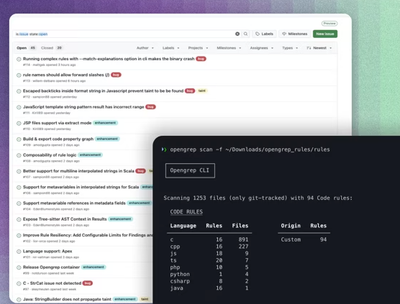
Research
Security News
Lazarus Strikes npm Again with New Wave of Malicious Packages
The Socket Research Team has discovered six new malicious npm packages linked to North Korea’s Lazarus Group, designed to steal credentials and deploy backdoors.
jssip_client
Advanced tools
Flowroute SIP over WebSocket and WebRTC JavaScript client.
It's actually is a facade for WebRTC, DOM and JsSIP APIs to easy development of Flowroute applications on frontend.
https://demo.webrtc.flowroute.com/fr.html?cache_invalidate=xxx
Available on Node Package Manager: npm install --save jssip_client
For a static script installation. Soon.
You'll only require node (+10.x.y) (if you haven't installed it yet, use nvm). Then after clonning this repository, change directory to its
root and run once:
npm install
And after this, you probably will enjoy to see a demo app with hot reloading on your browser:
npm start
This demo HTML code is pretty simple and you can use it to further developing a frontend application on any lib/framework (React, jQuery, Angular, Vue etc.) or even vanilla JavaScript.
With the UI debugging console, you can see many of actions being dispatched by the user agent and its calls, everything that is available to you.
For package maintainers:
./release.sh x.y.z
Where "x.y.z" is actually the version you want to release (like ./release.sh 0.0.1).
This script will change the version in package.json, build production artifacts
into releases/ directory and and commit them. After this, you will want to git push
these changes and, for Node maintainers, also run npm publish command.
First, create an instance of Flowroute client. You can pass some optional parameters to turn on the browser console SIP debugging and handle every client actions. All available param keys are available on constructor docstring (so if you use a mainstrain editor/IDE, it'll even show them for you with descriptions). Remember that these parameters are optional and you can make a call work without them, they'll be assigned to default ones.
const flowrouteClient = new FlowrouteClient({
debug: true,
onUserAgentAction: console.warn,
intervalOfQualityReport: 5000,
pointOfPresence: 'us-west-or',
});
Note that the example above is passing a param of QoS report. That's because during this interval of milliseconds, a SIP MESSAGE will be sent with WebRTC stats about the call RTC connection.
There's also a selected PoP, because many Flowroute PoPs are equiped with WebSocket/WebRTC gateways. The preferred PoP and its related edge strategy can be set using Flowroute APIs and the same ones are supported by this client, is therefore possible for a customer to control where the media should be relayed to ensure we can avoid unnecessary media relay.
Some other common parameters are callerId and password.
Always check the docstring for the full list.
Having the client ready, you can start a connection with the signaling server and invoke the SIP REGISTER:
flowrouteClient.start();
After receiving the { type: 'registered' } action on onUserAgentAction callback,
you're free to make calls. And it's simple as:
flowrouteClient.call({
to: '',
onCallAction: console.warn,
});
As always, parameters are optionals (although you can consider this to a
required one, another approach is using flowrouteClient.setDID method before
this and here omitting to). If you want, a audioConstraints parameter
is available so you can pick, for example, a selected audio output device id.
You can easily control player volume, from 0 (mutting it) to 100 (loudest):
flowrouteClient.setOutputVolume(100);
During a call, you can get its instance and make actions with JsSIP.RTCSession API,
like sending DTMFs:
flowrouteClient.getActiveCall().sendDTMF('4');
flowrouteClient.getActiveCall().sendDTMF('2');
Feel free to contribute on this:
FAQs
Flowroute SIP over WebSocket and WebRTC JavaScript client
The npm package jssip_client receives a total of 26 weekly downloads. As such, jssip_client popularity was classified as not popular.
We found that jssip_client demonstrated a not healthy version release cadence and project activity because the last version was released a year ago. It has 1 open source maintainer collaborating on the project.
Did you know?

Socket for GitHub automatically highlights issues in each pull request and monitors the health of all your open source dependencies. Discover the contents of your packages and block harmful activity before you install or update your dependencies.

Research
Security News
The Socket Research Team has discovered six new malicious npm packages linked to North Korea’s Lazarus Group, designed to steal credentials and deploy backdoors.

Security News
Socket CEO Feross Aboukhadijeh discusses the open web, open source security, and how Socket tackles software supply chain attacks on The Pair Program podcast.

Security News
Opengrep continues building momentum with the alpha release of its Playground tool, demonstrating the project's rapid evolution just two months after its initial launch.